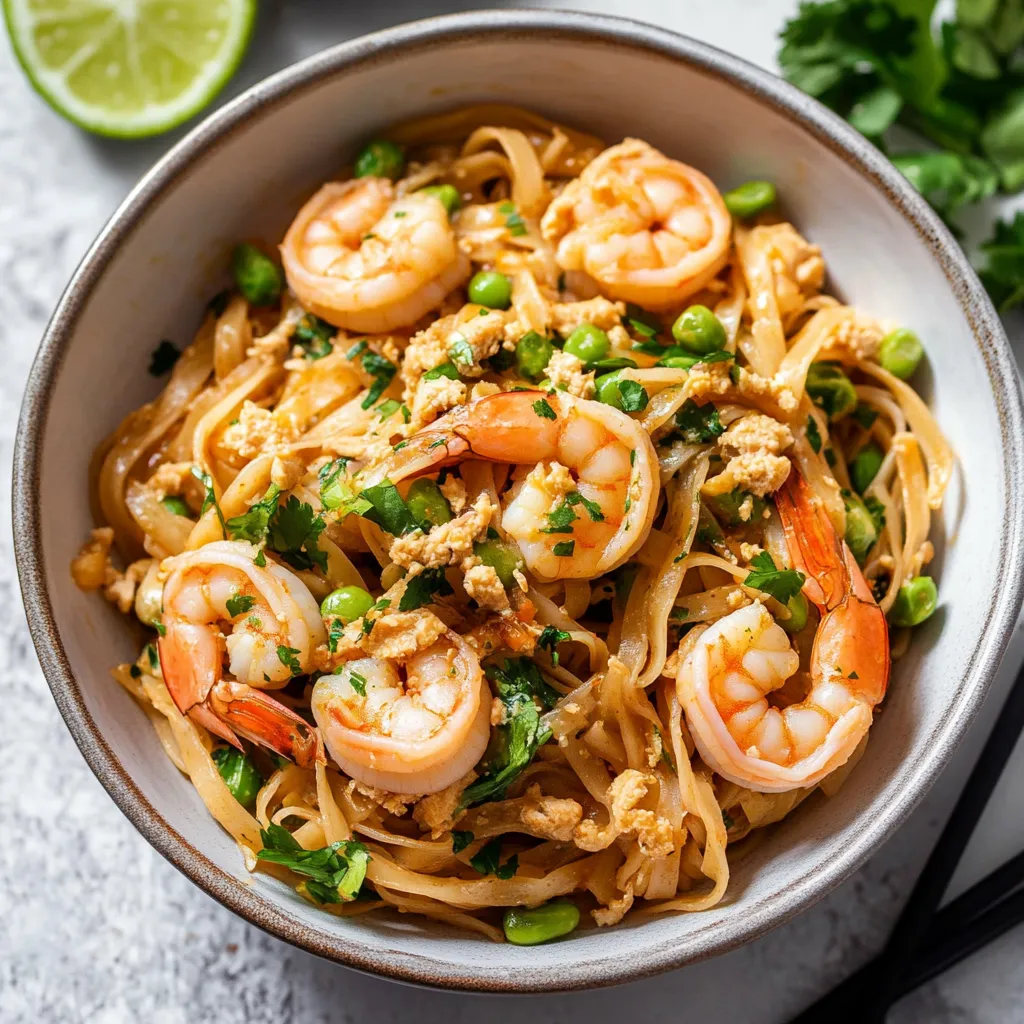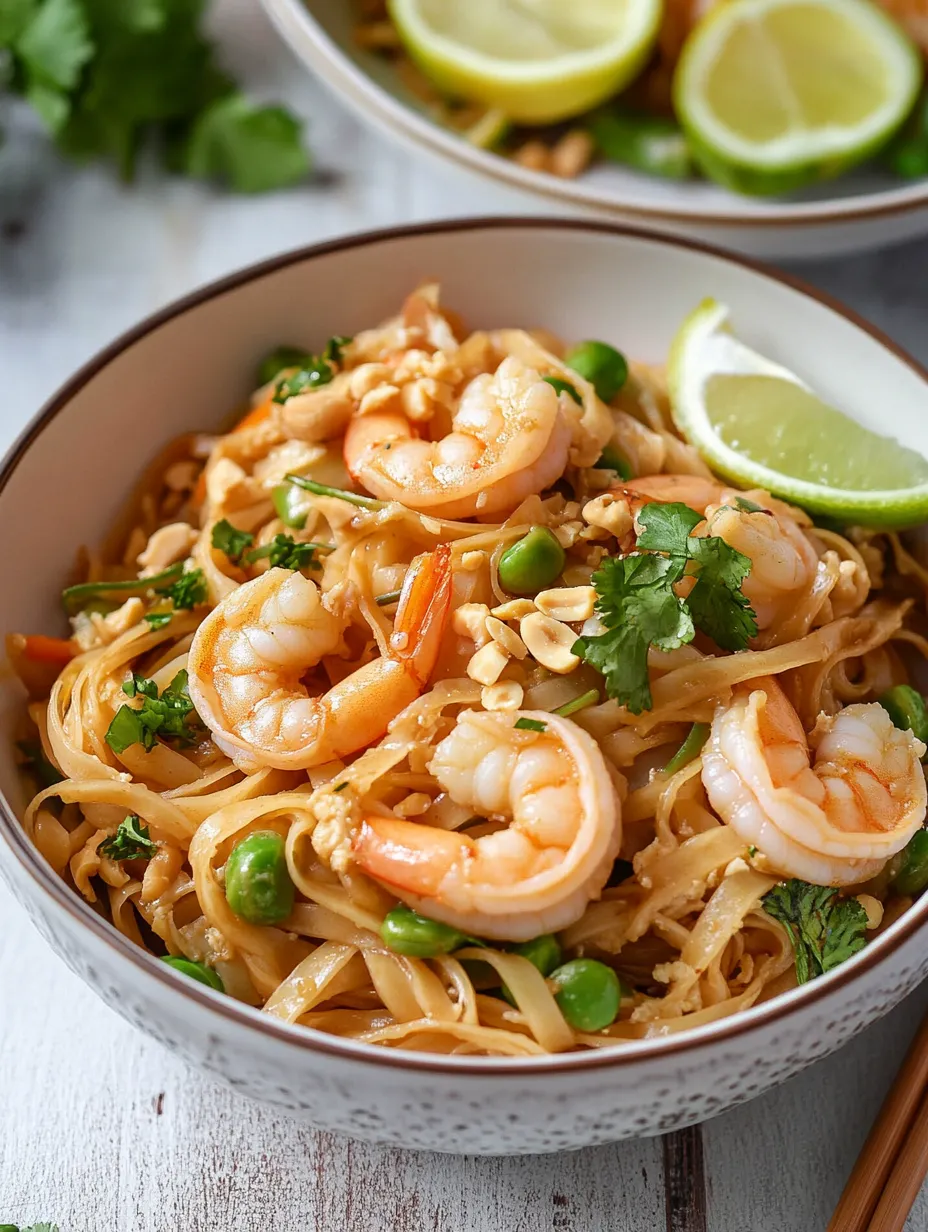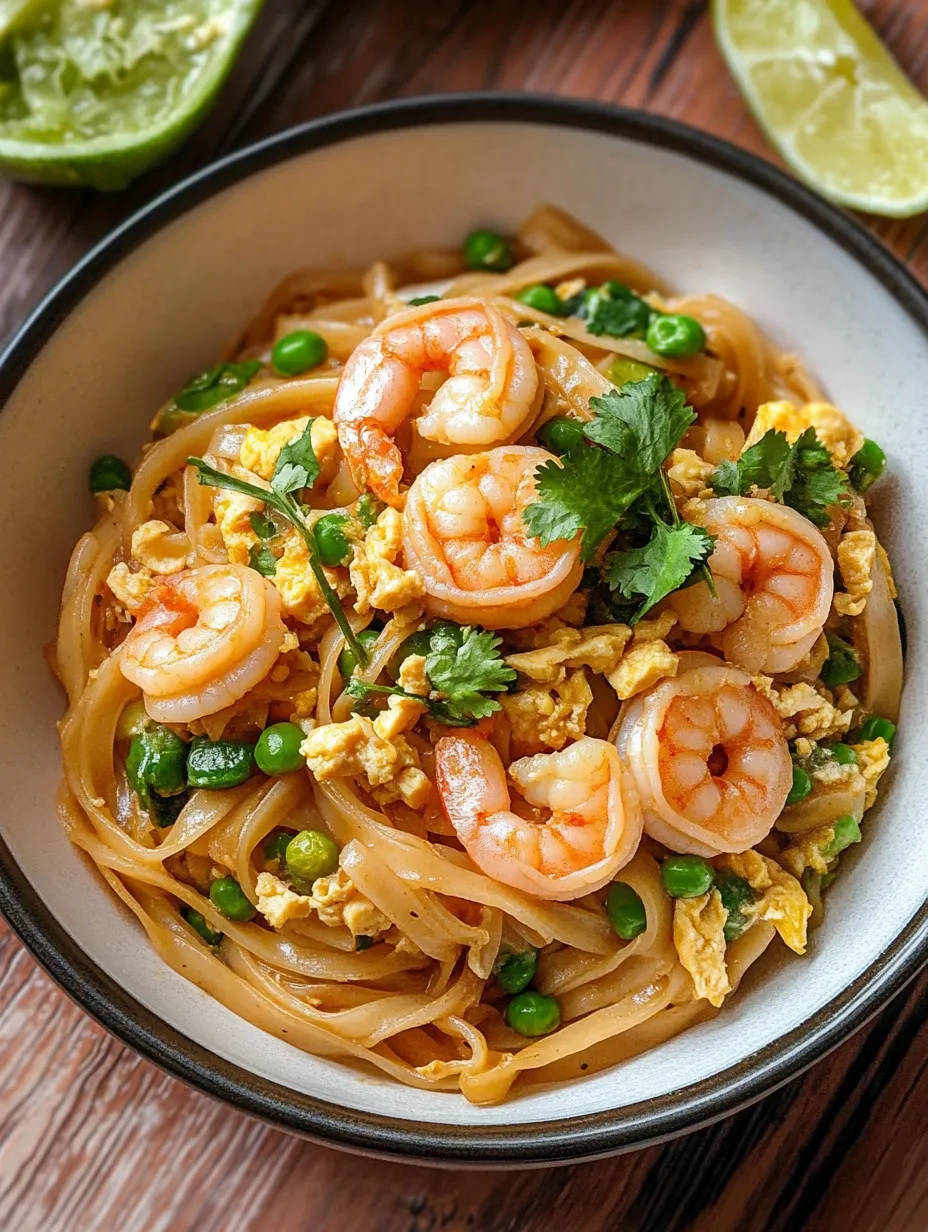 Pin it
Pin it
The enticing aroma of a perfect Shrimp Pad Thai brings the vibrant streets of Thailand right into your kitchen. This beloved noodle dish balances sweet, tangy, and nutty flavors with tender shrimp and perfectly cooked noodles. After countless attempts to recreate authentic Thai flavors at home, I've discovered that the secret lies in achieving the right sauce consistency and timing the shrimp just right.
The first time I made this at home, my daughter declared it better than our favorite Thai restaurant. The key was getting that sauce just right - not too thick, not too thin, with the perfect balance of peanut butter and soy sauce.
Essential Ingredients and Selection Tips
- Shrimp: Choose medium-sized (21-25 count) for the best texture. Fresh or properly thawed frozen work equally well
- Peanut Butter: Smooth, natural peanut butter creates the silkiest sauce
- Rice Noodles: Look for flat, medium-width noodles. They should be slightly translucent when dry
- Garlic and Ginger: Fresh ingredients make a noticeable difference in flavor
- Sesame Oil: Use toasted variety for deeper flavor
- Cilantro: Choose bunches with bright, fresh leaves for garnish
 Pin it
Pin it
Detailed Cooking Instructions
1. Perfect the Sauce Base
- Step 1:
- Whisk peanut butter until smooth before adding other ingredients
- Step 2:
- Add hot water gradually to achieve desired consistency
- Step 3:
- Taste and adjust seasoning before adding to noodles
- Step 4:
- Let sauce sit to allow flavors to meld
2. Master the Noodle Technique
- Step 1:
- Don't overcook - they should be just tender
- Step 2:
- Rinse with cool water to stop cooking
- Step 3:
- Toss with a tiny bit of oil to prevent sticking
- Step 4:
- Keep them slightly undercooked as they'll continue cooking in the sauce
3. Achieve Perfect Shrimp
- Step 1:
- Pat shrimp dry before cooking
- Step 2:
- Cook in a single layer
- Step 3:
- Watch for the telltale C-shape - don't let them curl into tight O's
My first attempt at Pad Thai taught me the importance of mise en place. Having everything ready before heating the wok makes the difference between perfectly cooked and overcooked ingredients.
Temperature Control
Keep your pan hot enough to sear but not so hot that the sauce burns. I've learned to listen to the sizzle - it should be lively but not aggressive.
Sauce Balance
The key to authentic Pad Thai sauce is balance. If it's too thick, add water a tablespoon at a time. Too thin? Let it simmer briefly to reduce.
Vegetable Integration
Flash-cooking the vegetables with the hot pasta water is brilliant - it maintains their crunch while making the process more efficient.
Garnish Strategy
I arrange garnishes in separate bowls, letting everyone customize their dish. The interactive element makes dinner more fun.
 Pin it
Pin it
Final Thoughts: This Shrimp Pad Thai recipe proves that restaurant-quality Thai food is achievable at home. The combination of chewy noodles, succulent shrimp, and that irresistible peanut sauce creates a dish that's both comforting and exciting. Each time I make it, I'm transported back to the bustling streets of Bangkok, where the simple act of cooking becomes an adventure in flavor.
Frequently Asked Questions
- → Can I use different vegetables?
- Yes! Snow peas, bell peppers, carrots, or any quick-cooking vegetables work well in this recipe.
- → How spicy is this dish?
- The basic recipe is mildly spicy. Adjust the amount of sriracha to make it milder or spicier to taste.
- → Can I use rice noodles instead of linguine?
- Yes, traditional rice noodles work great. Just adjust cooking time according to package instructions.
- → Can I make this ahead of time?
- While best served fresh, leftovers can be stored in the refrigerator for up to 2 days. Reheat gently with a splash of water.
- → What can I substitute for peanut butter?
- Almond butter or sunflower seed butter can be used for those with peanut allergies, though it will change the flavor slightly.
